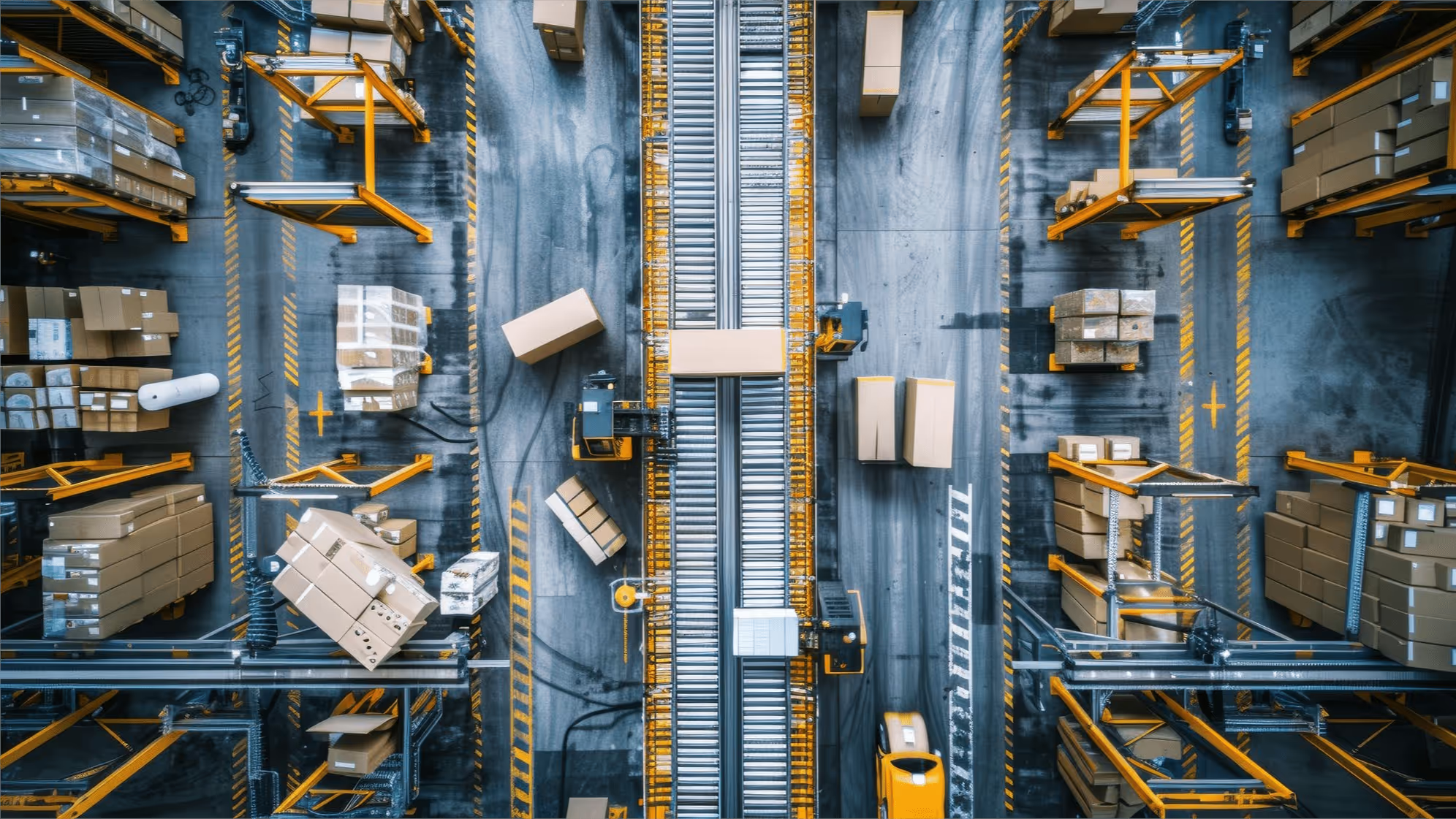Trust isn’t optional anymore
In today’s connected economy, you’re not just securing your own systems — you’re securing the entire chain of customers, vendors, and business partners who rely on you.
And that chain is only as strong as its least compliant link.
Every major security questionnaire, procurement checklist, and audit request now circles back to one question: “Can you prove your security controls are effective?”
That’s why SOC 2 supply chain compliance has become the new language of trust.
Whether you’re a SaaS provider, data processor, or cloud services partner, customers expect evidence — not promises — that you can safeguard their sensitive data and maintain a robust security posture.
From optional report to competitive advantage
A few years ago, SOC 2 was seen as something only big service organisations worried about. Now, even smaller software companies are racing to achieve certification before enterprise customers demand it.
- SOC 2 demonstrates maturity. It’s proof that your organisation has designed and tested effective controls to meet the five Trust Services Criteria — security, availability, processing integrity, confidentiality, and privacy.
- It reduces due diligence friction. A current SOC 2 or SOC for Supply Chain report gives procurement and security teams assurance that your systems are protected and monitored, saving weeks of vendor vetting.
- It’s market driven. Many organisations now see SOC 2 not as compliance paperwork, but as a competitive advantage — a trust signal baked directly into their go-to-market strategy.
In short: you can’t sell trust if you can’t prove it.
The rise of SOC for Supply Chain
The American Institute of Certified Public Accountants (AICPA) — the body behind SOC 2 — recognised that traditional service organisation reports weren’t enough for complex, global supply chains.
So they created SOC for Supply Chain — a risk management and reporting framework tailored for producers, distributors, and manufacturers.
Unlike SOC 2, which focuses on service organisations handling customer data, SOC for Supply Chain examines supply chain risks, controls, and resilience.
- It’s a market-driven framework designed to enhance transparency.
- It helps organisations identify and measure risks along every link in the chain.
- It offers a supply chain examination and final report that provides assurance to customers and intended users about the entity’s objectives, operations, and system description.
Obtaining a SOC for Supply Chain report gives organisations a leg up over competitors that lack formal attestation reports covering their supply chain activities.
In a market where resilience is trust, that’s a serious differentiator.
Mapping SOC 2 to the supply chain reality
While SOC 2 and SOC for Supply Chain have distinct focuses, they share DNA — especially in how they embed information security, risk management, and internal governance across an organisation’s systems.
Here’s how SOC 2 integrates with supply chain processes:
- It ensures robust security measures are implemented and audited across cloud platforms, vendors, and internal tools.
- It embeds processing integrity and data protection directly into your operations and system processing activities.
- It requires clear access controls — including multi-factor authentication (MFA) — to prevent unauthorised access to sensitive information and critical assets.
- It mandates regular risk assessments, audit procedures, and privacy controls to ensure continuous compliance.
When applied across the supply chain, SOC 2 transforms compliance from a checkbox exercise into a living framework for resilience.
Understanding the five Trust Services Criteria
Let’s break down the five Trust Services Criteria (TSC) that underpin SOC 2 and SOC for Supply Chain:
- Security: Protection against unauthorised access to systems and data.
- Access controls such as multi-factor authentication are essential for preventing unauthorised parties from entering systems or viewing sensitive data.
- Availability: Ensuring systems and services operate reliably to meet commitments.
- Comprehensive disaster recovery and business continuity plans are vital for maintaining uptime in supply chain operations.
- Processing Integrity: Ensuring data integrity — that operations and transactions are complete, accurate, and authorised.
- Strong validation and reconciliation controls ensure relevant information is processed correctly across the supply chain.
- Confidentiality: Safeguarding information designated as confidential.
- Encryption, data classification, and vendor NDAs maintain confidentiality throughout supply chain activities.
- Privacy: Protecting personal and sensitive information collected or processed by your organisation.
- Privacy controls ensure compliance with regulatory frameworks such as GDPR, DORA, and NIS2.
Together, these criteria create a universal language of trust between organisations and customers.
The ripple effect: one weak link, entire chain at risk
It takes only one vendor’s vulnerability to compromise everyone.
A single misconfigured database or unpatched cloud service can trigger supply chain risks across dozens of connected companies.
That’s why effective supply chain compliance begins with rigorously defined standard operating procedures — outlining how each process, vendor, and system is evaluated, monitored, and tested.
Every service organisation must treat vendor management as part of its own control environment:
- Review supplier SOC 2 reports and supply chain SOC attestations regularly.
- Verify access controls (including MFA and physical security).
- Test business continuity and incident response plans.
- Ensure detailed information on vendors is logged in your risk register and audit trail.
Robust vendor oversight isn’t bureaucracy — it’s how you maintain the effectiveness of your internal controls and safeguard your customer data.
SOC 2 in the age of continuous compliance
Gone are the days of one-off audits and dusty binders.
Modern security teams are moving to continuous compliance — using automated systems to monitor evidence, test controls, and track policy updates in real time.
Platforms like Hicomply make this transformation possible. Instead of manually gathering spreadsheets every quarter, teams can:
- Automate policy updates and control testing.
- Monitor system processing for anomalies or gaps.
- Track supply chain activities and vendor responses within the same dashboard.
- Generate a ready-to-share audit trail whenever an auditor (or customer) asks.
This approach gives you ongoing assurance — not just a once-a-year pat on the back.
The role of certified public accountants
Both SOC 2 and SOC for Supply Chain attestations are conducted by independent Certified Public Accountants (CPAs) trained under AICPA guidance.
They evaluate whether your system description, internal controls, and security measures meet the stated Trust Services Criteria.
Their final report provides assurance to intended users — your customers, investors, and partners — that your organisation’s systems meet recognised standards for security, availability, processing integrity, confidentiality, and privacy.
In other words, they validate not just what you say you do, but how effectively you do it.
Turning compliance challenges into commercial wins
SOC 2 and supply chain audits can feel heavy. The description criteria, documentation, and audit procedures take real effort. But the payoff is significant.
- Reduced supply chain risk: You gain visibility over every dependency.
- Stronger data integrity: Controls ensure accurate and authorised system processing.
- Faster sales cycles: Customers trust you faster when they see a verified SOC 2 or Supply Chain report.
- Regulatory alignment: It satisfies overlapping regulatory frameworks (GDPR, ISO 27001, NIS2) and enhances your overall compliance posture.
- Cultural shift: It embeds risk management and internal governance into daily operations — not just once a year during audit season.
Many organisations realise that once they embed SOC 2 into their workflows, compliance becomes easier to maintain than to rebuild.
How software providers can stay ahead
For software companies and cloud service providers, proactive compliance is a business enabler.
Customers want to see:
- Proof of strong information security and privacy controls.
- Evidence of multi-factor authentication and physical security protecting critical assets.
- A documented risk profile and remediation plan.
- Assurance that systems are continuously monitored for integrity and availability.
By integrating SOC 2 into your operations and vendor management, you send a clear message: your security controls protect not just your own systems, but everyone connected to you.
Meeting customer demands before they land in your inbox
Procurement teams are getting smarter — and faster. Before you even get to contract stage, they’re scanning your website for your SOC 2 trust page or downloadable final report.
Smart organisations don’t wait to be asked. They anticipate.
That means:
- Publishing a clear overview of your compliance posture.
- Sharing your SOC 2 or supply chain report under NDA.
- Mapping your controls to recognised Trust Services Criteria.
- Keeping your assurance documentation up to date with continuous compliance.
When you make detailed information easy to access, you transform compliance from a blocker into a sales accelerant.
Real talk: risk doesn’t scale, but trust does
Every new vendor, API, and integration adds risk to your operations. But with the right controls, those risks become manageable — even measurable.
SOC 2 and SOC for Supply Chain give leaders the tools to maintain control and clarity across sprawling networks. They help you prove, not just promise, that your systems meet the highest standards of security, availability, and processing integrity.
And when you can provide assurance at every link in the supply chain, customers notice.
How Hicomply helps
Hicomply simplifies the hardest part of SOC 2 and supply chain compliance — the execution.
With automated audit procedures, vendor management workflows, and real-time monitoring, Hicomply helps your security teams maintain continuous compliance without drowning in manual effort.
You can:
- Map your controls to the five Trust Services Criteria.
- Monitor your supply chain activities for relevant information and anomalies.
- Automate multi-factor authentication enforcement tracking.
- Manage vendor risk and supply chain SOC documentation in one place.
- Generate an auditor-ready system description and final report on demand.
When a customer asks for proof, you’ll already have it — organised, up to date, and easy to share.
See how Hicomply automates SOC 2 and supply chain compliance — book a demo today.





.svg)




